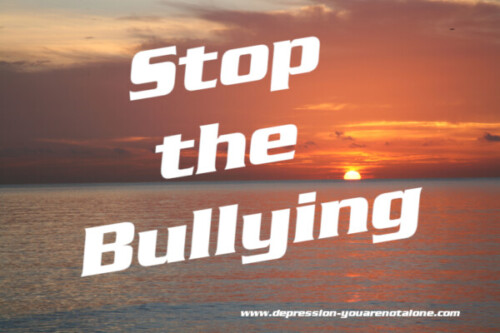As bullying is so prevalent, and destructive we have decided to post a series of informational articles, one per day, beginning July 5 and ending Wednesday, July 14. On Friday, July 16, we will begin a series of informational articles dealing with cyberbullying. – Editorial Team
The Roles Kids Play in Bullying
There are many roles that kids can play. Kids can bully others, they can be bullied, or they may witness bullying. When kids are involved in bullying, they often play more than one role. Sometimes kids may both be bullied and bully others or they may witness other kids being bullied. It is important to understand the multiple roles kids play in order to effectively prevent and respond to bullying.
Importance of Not Labeling Kids
When referring to a bullying situation, it is easy to call the kids who bully others “bullies” and those who are targeted “victims,” but this may have unintended consequences. When children are labeled as “bullies” or “victims” it may:
- Send the message that the child’s behavior cannot change
- Fail to recognize the multiple roles children might play in different bullying situations
- Disregard other factors contributing to the behavior such as peer influence or school climate
Instead of labeling the children involved, focus on the behavior. For instance:
- Instead of calling a child a “bully,” refer to them as “the child who bullied”
- Instead of calling a child a “victim,” refer to them as “the child who was bullied”
- Instead of calling a child a “bully/victim,” refer to them as “the child who was both bullied and bullied others.”
Kids Involved in Bullying
The roles kids play in bullying are not limited to those who bully others and those who are bullied. Some researchers talk about the “circle of bullying” to define both those directly involved in bullying and those who actively or passively assist the behavior or defend against it. Direct roles include:
- Kids who Bully: These children engage in bullying behavior towards their peers. There are many risk factors that may contribute to the child’s involvement in the behavior. Often, these students require support to change their behavior and address any other challenges that may be influencing their behavior.
- Kids who are Bullied: These children are the targets of bullying behavior. Some factors put children at more risk of being bullied, but not all children with these characteristics will be bullied. Sometimes, these children may need helplearning how to respond to bullying.
Even if a child is not directly involved in bullying, they may be contributing to the behavior. Witnessing the behavior may also affect the child, so it is important for them to learn what they should do when they see bullying happen. Roles kids play when they witness bullying include:
- Kids who Assist: These children may not start the bullying or lead in the bullying behavior, but serve as an “assistant” to children who are bullying. These children may encourage the bullying behavior and occasionally join in.
- Kids who Reinforce: These children are not directly involved in the bullying behavior but they give the bullying an audience. They will often laugh or provide support for the children who are engaging in bullying. This may encourage the bullying to continue.
- Outsiders: These children remain separate from the bullying situation. They neither reinforce the bullying behavior nor defend the child being bullied. Some may watch what is going on but do not provide feedback about the situation to show they are on anyone’s side. Even so, providing an audience may encourage the bullying behavior.
- These kids often want to help, but don’t know how. Learn how to be “more than a bystander.”
- Kids who Defend: These children actively comfort the child being bullied and may come to the child’s defense when bullying occurs.
Most kids play more than one role in bullying over time. In some cases, they may be directly involved in bullying as the one bullying others or being bullied and in others they may witness bullying and play an assisting or defending role. Every situation is different. Some kids are both bullied and bully others. It is important to note the multiple roles kids play, because:
- Those who are both bullied and bully others may be at more risk for negative outcomes, such as depression or suicidal ideation.
- It highlights the need to engage all kids in prevention efforts, not just those who are known to be directly involved.
Source: stopbullying.gov

